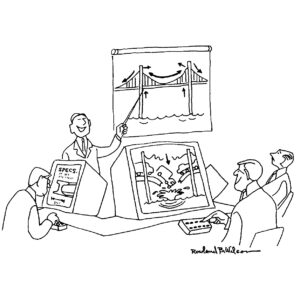For modeling, we believe, is basic and central to communication… If the concepts in the mind of one would-be communicator are very different from those in the mind of another, there is no common model and no communication.
…
We now define [communication] concisely as “cooperative modeling”—cooperation in the construction, maintenance, and use of a model.
…
When people communicate face to face, they externalize their models so they can be sure they are talking about the same thing. Even such a simple externalized model as a flow diagram or an outline—because it can be seen by all the communicators—serves as a focus for discussion. It changes the nature of communication: When communicators have no such common framework, they merely make speeches at each other; but when they have a manipulable model before them, they utter a few words, point, sketch, nod, or object.
…
Perhaps the reason present-day two-way telecommunication falls so far short of face-to-face communication is simply that it fails to provide facilities for externalizing models. Is it really seeing the expression in the other’s eye that makes the face-to-face conference so much more productive than the telephone conference call, or is it being able to create and modify external models?
The Computer as a Communication Device, by J.C.R. Licklider and Robert W. Taylor
